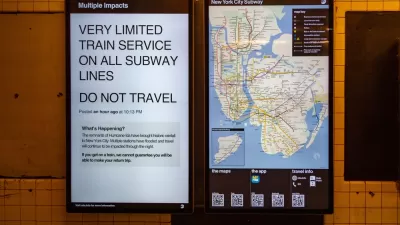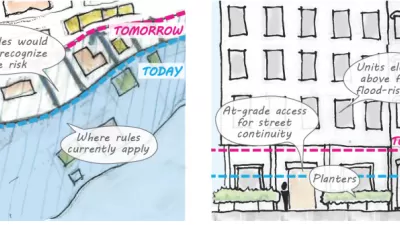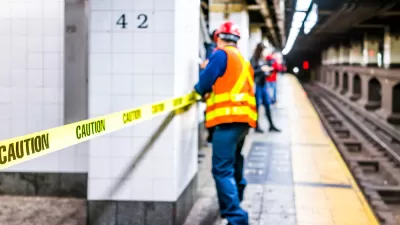Rebuilding and repairing New York City after Hurricane Sandy shows how climate change can exacerbate existing equity problems and that such disasters must spur efforts to rebuild fairly, not entrench existing problems.

Michelle Chen investigates the ongoing rebuilding process in New York City and the surrounding areas after Hurricane Sandy in a piece for The Nation. She talks about how efforts in the city are focused, not only on immediate repairs but also, "To safeguard cities from future disasters, cities need to improve infrastructural protection and promote ecologically conscious urban planning. Locally this means creating resilient local food, transit and energy systems that are responsive to global environmental pressures and accountable to local communities," Chen argues.
Strengthening the city is, however, only one piece of the work, another is ensuring that those most vulnerable to such disasters don't have their existing problems redoubled by the cities efforts. "New Orleans represents the nightmare scenario of a city that has struggled to implement economic- and environmental-justice measures after environmental disaster left poor communities of color displaced, exposed to economic exploitation, and politically marginalized in the rebuilding efforts," Chen writes.
These considerations will apply to issues all over the world. "On a global scale, both adaptation and mitigation are twin pillars of the Paris climate treaty, but the question of economic fairness looms large over both."
FULL STORY: There’s a Right Way—and a Wrong Way—for Cities to Mitigate Climate Change

Maui's Vacation Rental Debate Turns Ugly
Verbal attacks, misinformation campaigns and fistfights plague a high-stakes debate to convert thousands of vacation rentals into long-term housing.

Planetizen Federal Action Tracker
A weekly monitor of how Trump’s orders and actions are impacting planners and planning in America.

In Urban Planning, AI Prompting Could be the New Design Thinking
Creativity has long been key to great urban design. What if we see AI as our new creative partner?

King County Supportive Housing Program Offers Hope for Unhoused Residents
The county is taking a ‘Housing First’ approach that prioritizes getting people into housing, then offering wraparound supportive services.

Researchers Use AI to Get Clearer Picture of US Housing
Analysts are using artificial intelligence to supercharge their research by allowing them to comb through data faster. Though these AI tools can be error prone, they save time and housing researchers are optimistic about the future.

Making Shared Micromobility More Inclusive
Cities and shared mobility system operators can do more to include people with disabilities in planning and operations, per a new report.
Urban Design for Planners 1: Software Tools
This six-course series explores essential urban design concepts using open source software and equips planners with the tools they need to participate fully in the urban design process.
Planning for Universal Design
Learn the tools for implementing Universal Design in planning regulations.
planning NEXT
Appalachian Highlands Housing Partners
Mpact (founded as Rail~Volution)
City of Camden Redevelopment Agency
City of Astoria
City of Portland
City of Laramie





























